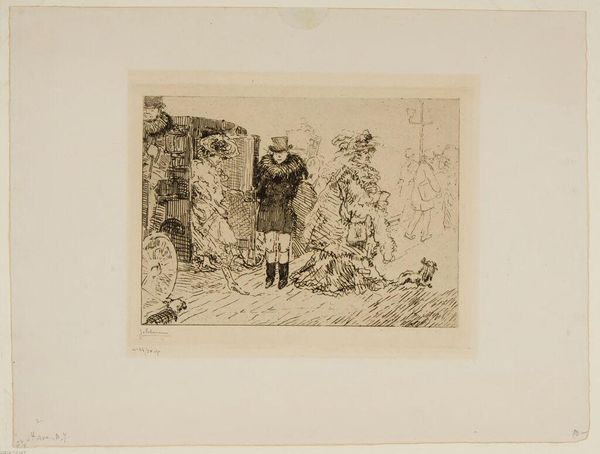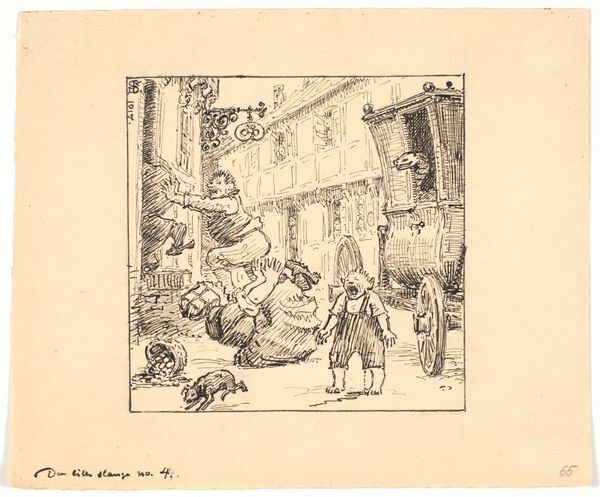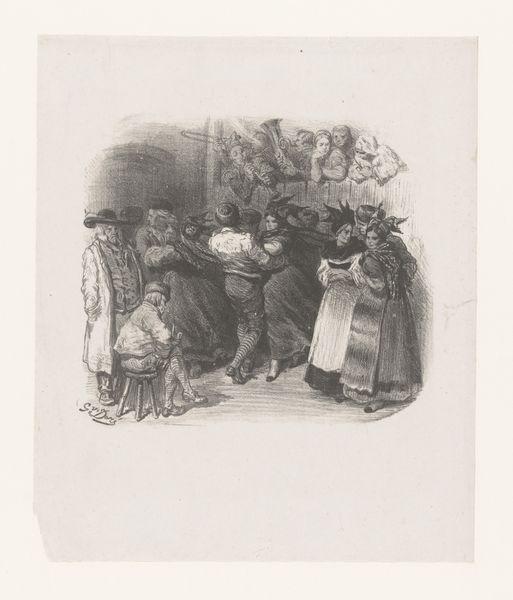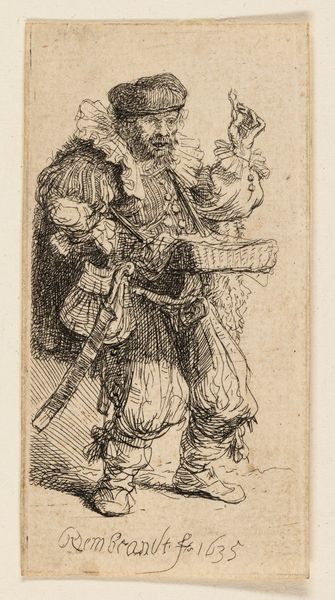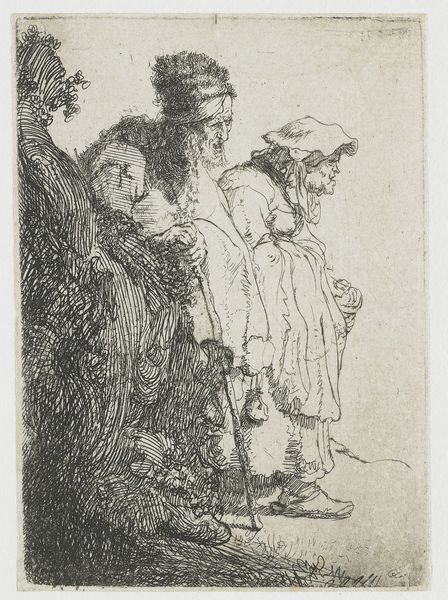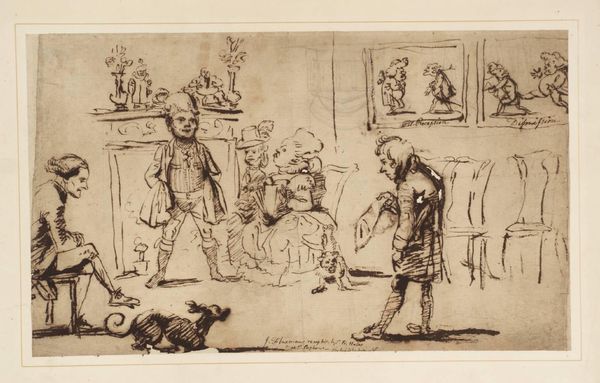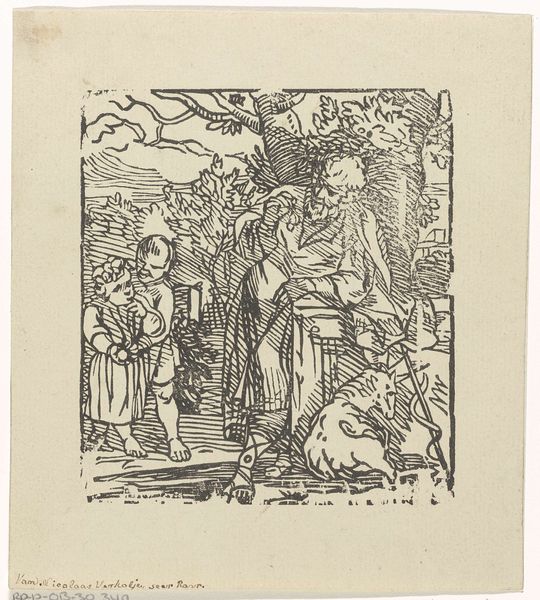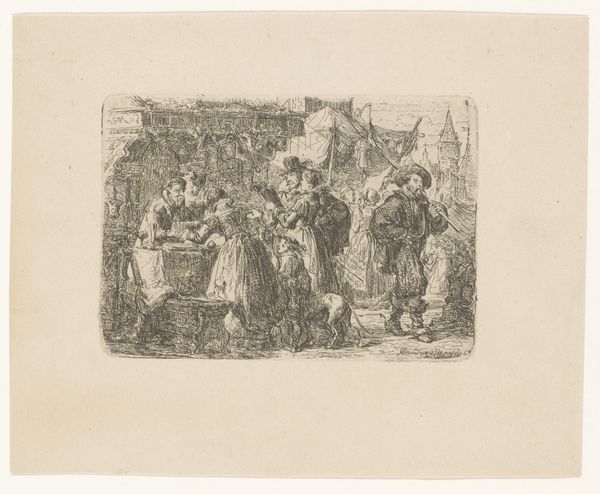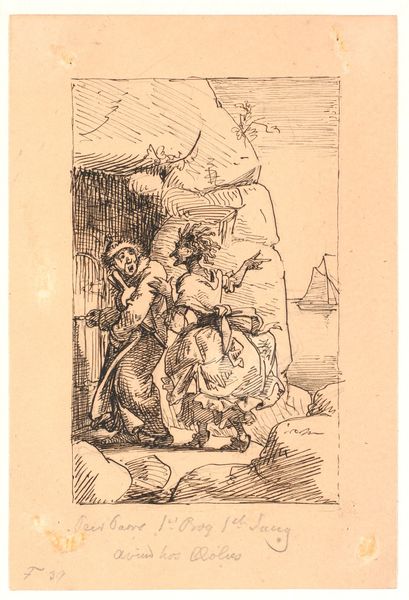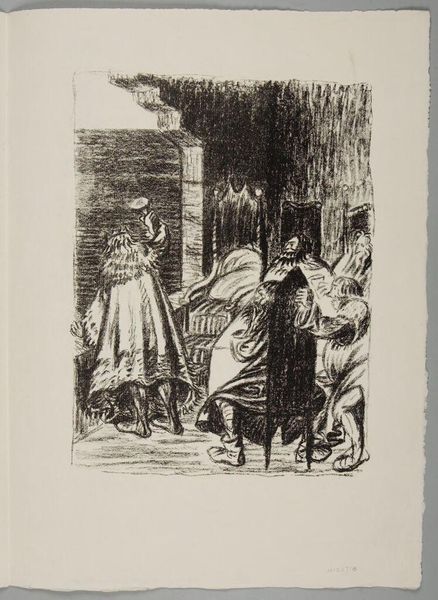
Après-Midi, Cinquième Avenue, New York (Afternoon, Fifth Avenue, New York) 1910
0:00
0:00
drawing, print, ink
#
drawing
#
art-nouveau
#
street-art
# print
#
ink
#
cityscape
Dimensions: image: 14.2 x 19.6 cm (5 9/16 x 7 11/16 in.) plate: 16.4 x 19.6 cm (6 7/16 x 7 11/16 in.) sheet: 27.1 x 32.5 cm (10 11/16 x 12 13/16 in.)
Copyright: National Gallery of Art: CC0 1.0
Editor: This is Jean-Émile Laboureur’s "Après-Midi, Cinquième Avenue, New York," created around 1910. It's an ink drawing, giving it a sort of sketched quality. I'm immediately drawn to the contrasting textures, like the soft fur against the sharp lines of the buildings. What do you notice first in terms of composition and technique? Curator: The brilliance lies in the use of line itself. Observe how the artist employs hatching and cross-hatching, not merely to define form, but to create varying densities of tone. This imbues the scene with an almost palpable atmospheric pressure. Notice how the line becomes more frantic and concentrated where the figures overlap. What effect does that have? Editor: I think it really emphasizes their presence, making them the focal point against a more blurred background. So the energy of the lines almost communicates the energy of the street itself? Curator: Precisely. The line dictates not only form but also the very rhythm of the piece. Consider the diagonal thrust of the carriage wheel mirrored in the tilt of a passing figure's hat, these echo throughout the composition creating a subtle, underlying geometry. Are you noticing these visual relationships? Editor: That's really interesting; I hadn't seen that before. I was so focused on the details of the figures I overlooked the structure of the entire drawing. It’s like the drawing itself is trying to capture the chaotic yet ordered movement of city life. Curator: Yes, the strategic deployment of line shapes our understanding, moving us from the immediate representational level to an experience of deeper formal interconnectedness. Every stroke contributes to a web of meaning, a visual language the artist carefully constructs. Editor: I see how focusing on these intrinsic formal relationships can totally reshape your understanding of the art. Curator: Indeed, it’s about moving beyond what is depicted, to understand how it is depicted, and what that form communicates on a deeper, more elemental level.
Comments
No comments
Be the first to comment and join the conversation on the ultimate creative platform.
